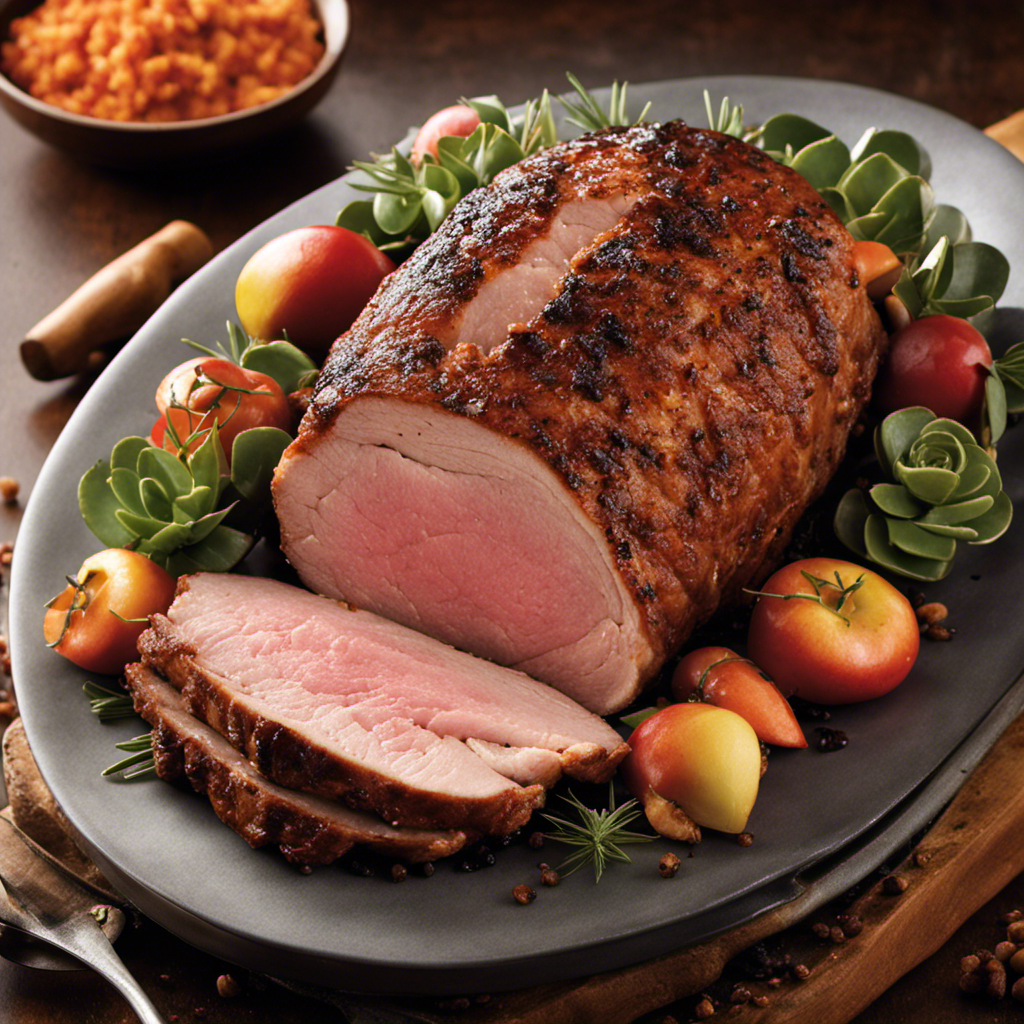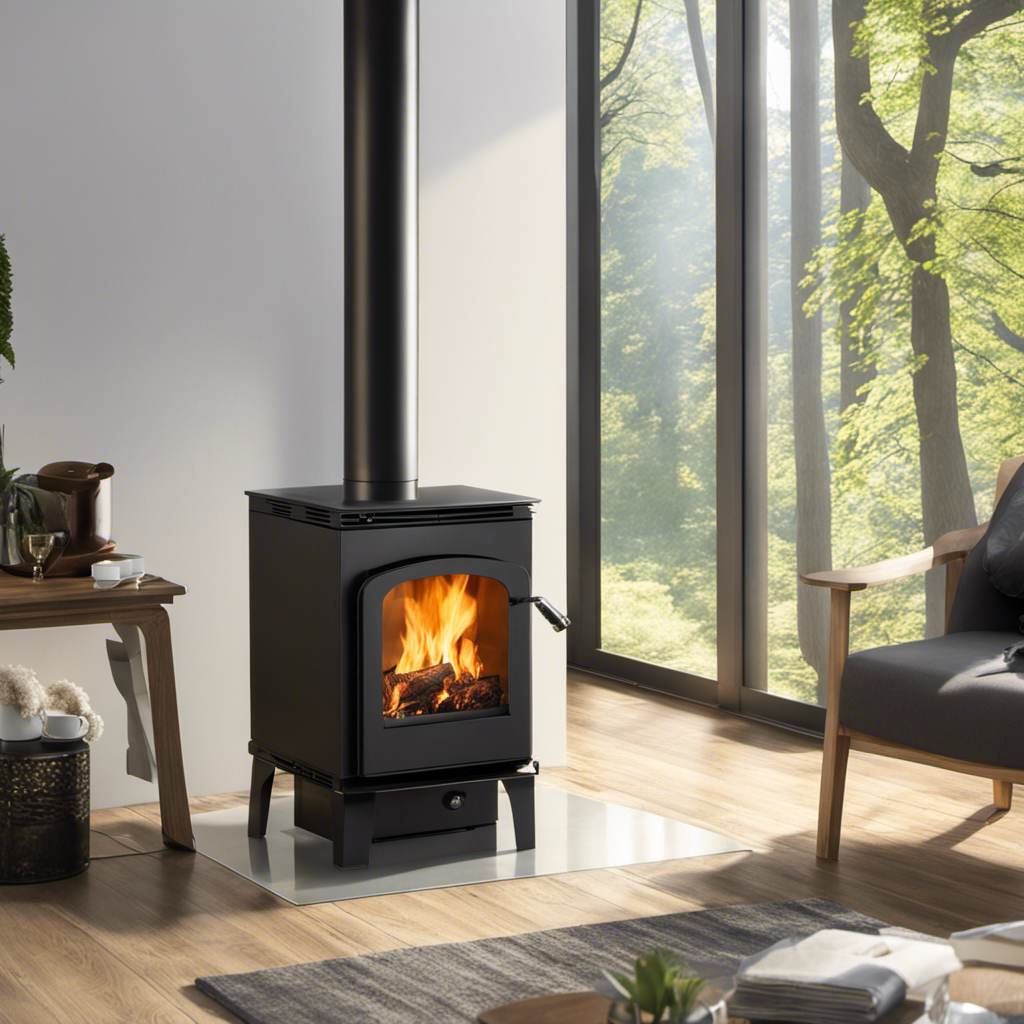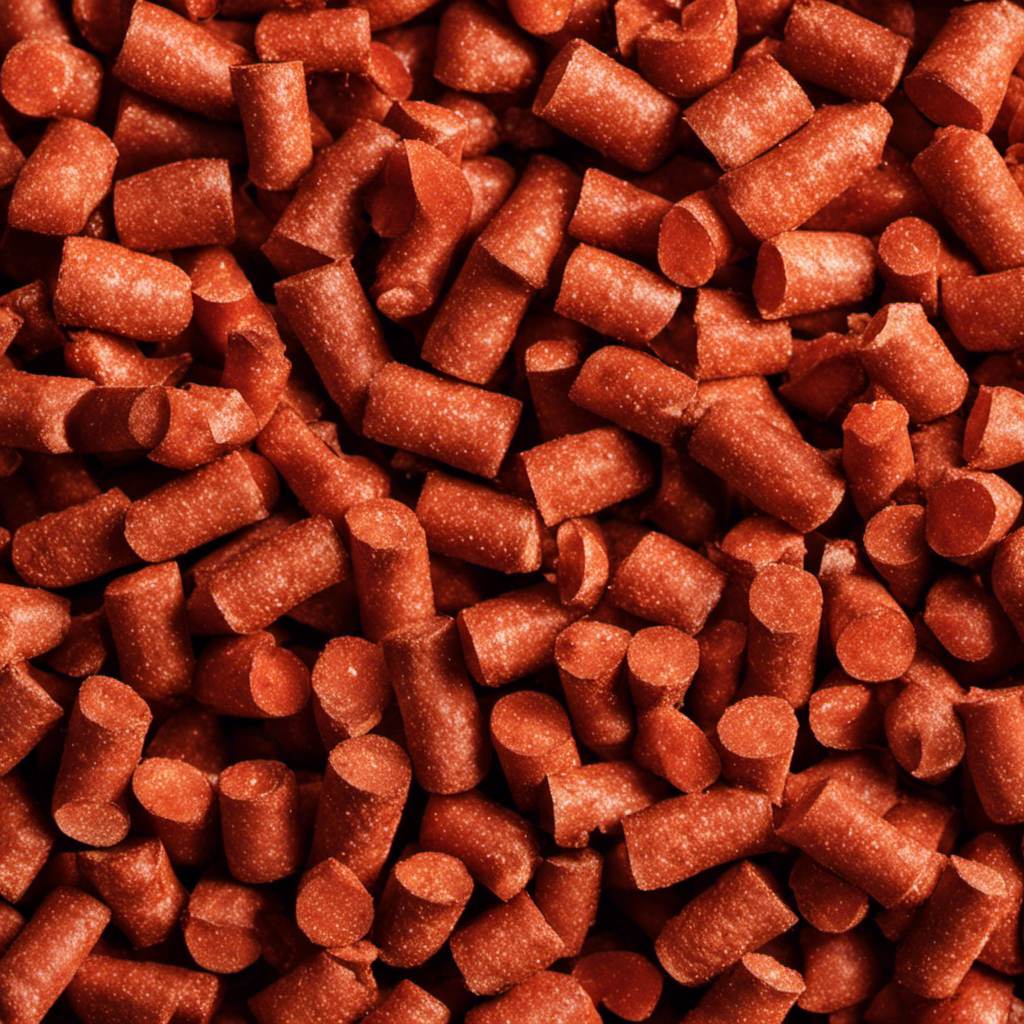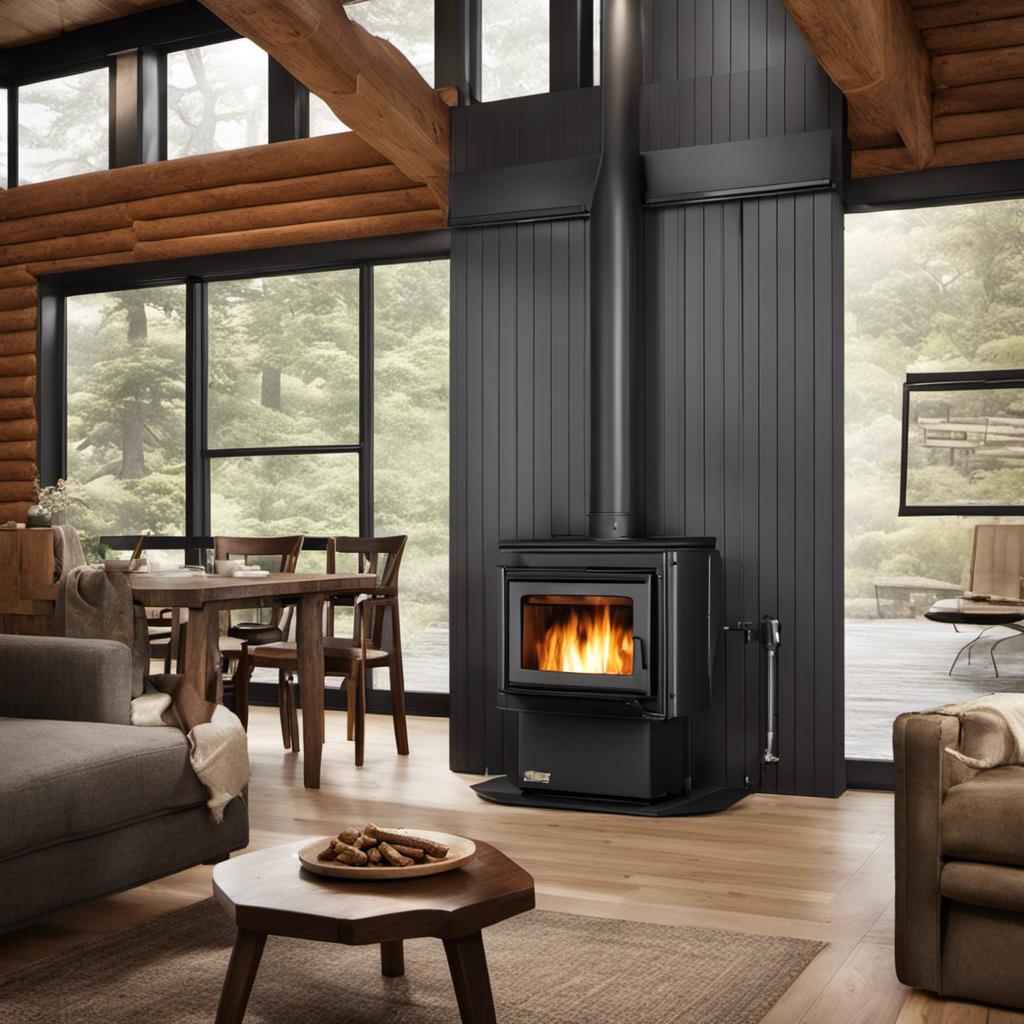Pellet stoves offer a modern, compact design with automated features, making them easier to operate and maintain, while wood stoves have a traditional look, require manual tending, and last longer. Pellet stoves produce fewer emissions and are cheaper to install, but they depend on electrical parts that may need repairs. Wood stoves are more durable but require more upkeep. Exploring these differences can help you choose the best heating option for your home.
Key Takeaways
- Pellet stoves offer automatic ignition, programmable controls, and easier maintenance, while wood stoves require manual lighting and periodic chimney cleaning.
- Wood stoves are typically more durable and longer-lasting, with simpler mechanical parts, compared to pellet stoves’ electrical components.
- Pellet stoves have a modern design and smaller size, suitable for urban spaces, whereas traditional wood stoves feature a rustic look and larger size.
- Both stove types vary in heating capacity; proper sizing ensures effective coverage, with pellet stoves generally catering to small to medium spaces.
- Pellet stoves are more eco-friendly with lower emissions and sustainable fuel options, but wood stoves use locally sourced firewood and have a longer lifespan.
Differences in Design and Appearance
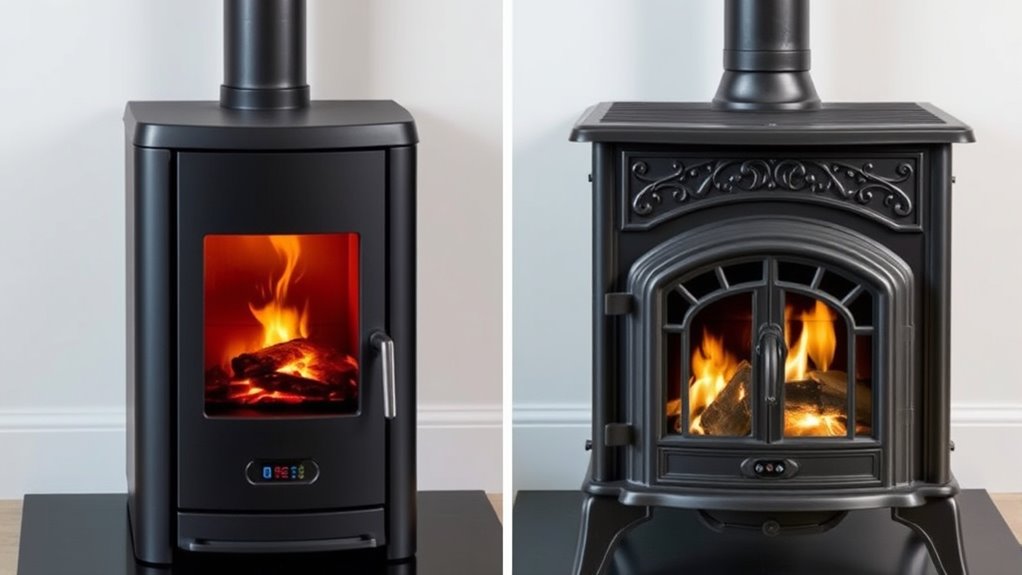
When comparing their designs, you’ll notice that wood stoves typically have a rustic look with visible firebricks and heavy cast iron or steel bodies, making them appear bulky and traditional. Their exterior emphasizes durability and an old-world charm, reflecting classic style. In contrast, pellet stoves feature a more modern appearance, often with sleek lines and glass viewing windows that showcase the fire inside. Their style leans toward contemporary, with polished finishes that blend into modern interiors seamlessly. The shape and size also differ; traditional wood stoves are usually larger and heavier, emphasizing robustness. Pellet stoves tend to be more compact and lightweight, with a streamlined form that enhances their modern aesthetic. Overall, design choices greatly influence the appearance and style of each stove, catering to different decorative preferences. Additionally, the design process can be influenced by creative practice, which encourages experimentation with new styles and materials to create innovative appliance aesthetics.
Sizes and Heating Capacity
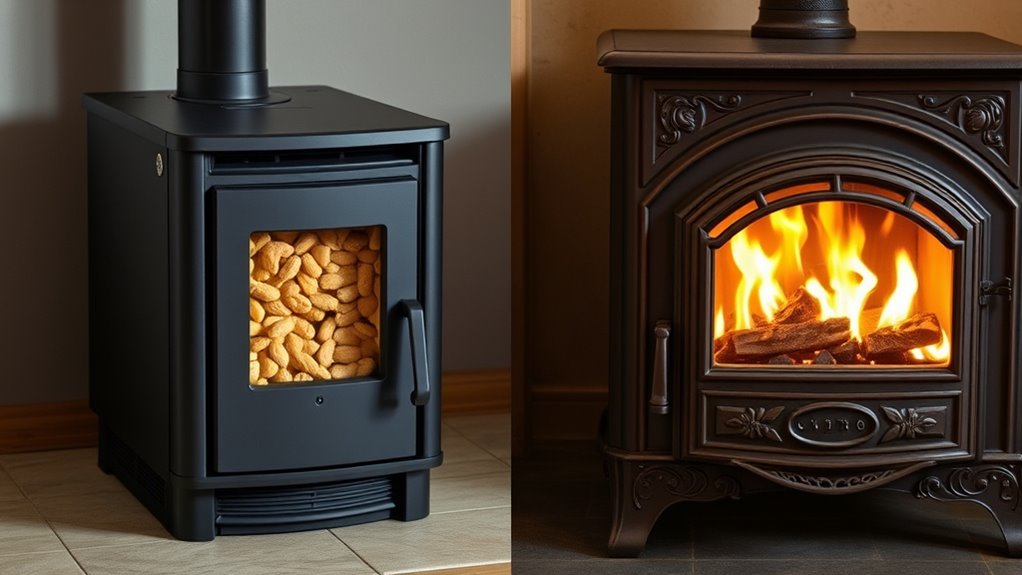
Design and appearance influence how a stove fits into your home, but understanding their sizes and heating capacities is key to selecting the right model for your space. Stove sizes and BTUs determine the heating capacity, ensuring your room gets adequate warmth.
- Wood stoves range from 6,000 to over 100,000 BTUs, offering versatile options for different heating needs.
- Pellet stoves typically provide 8,000 to 90,000 BTUs, suited for small to medium-sized spaces.
- Proper size selection, like a 42,000 BTU stove for 1,300 sq ft or a 60,000 BTU unit for 2,000 sq ft, maximizes space coverage and heating efficiency.
- Both stove models come in various sizes and styles, matching specific room sizes and heating requirements.
- Kia Tuning options can enhance the overall performance and efficiency of your stove setup, ensuring better heat distribution and user experience.
Choosing the right size guarantees efficient operation without overheating or underheating.
Maintenance and Repair Requirements
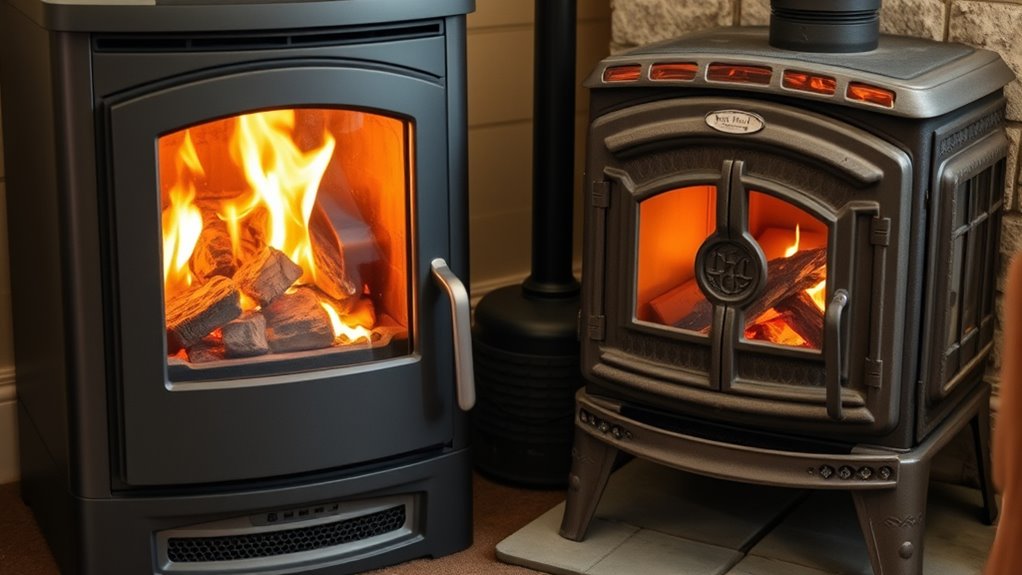
Maintaining your stove is vital for safe operation and efficient heating, and each type has specific upkeep requirements. Regular maintenance and repair help prevent safety hazards and keep your stove running smoothly. Wood stoves require annual chimney cleaning and inspection to remove creosote buildup and guarantee proper venting. Pellet stoves need weekly cleaning of ash traps, burn pots, and exhaust systems to sustain efficiency. Because pellet stoves have more electrical components like motors and fans, they may need repair or replacement over their lifespan of 15-20 years. Routine inspection of gaskets and seals helps uphold safety and efficiency. Proper maintenance of venting systems and components is essential for safe operation and prolongs the lifespan of both stove types. Additionally, specialized attachments can enhance the functionality and ease of maintenance for your stove, making stove upkeep more manageable. Incorporating regular inspections based on manufacturer guidelines can also detect potential issues early, ensuring continued safe operation. Regular cleaning of venting systems is crucial to prevent blockages and ensure proper airflow.
Operational Aspects and Ease of Use
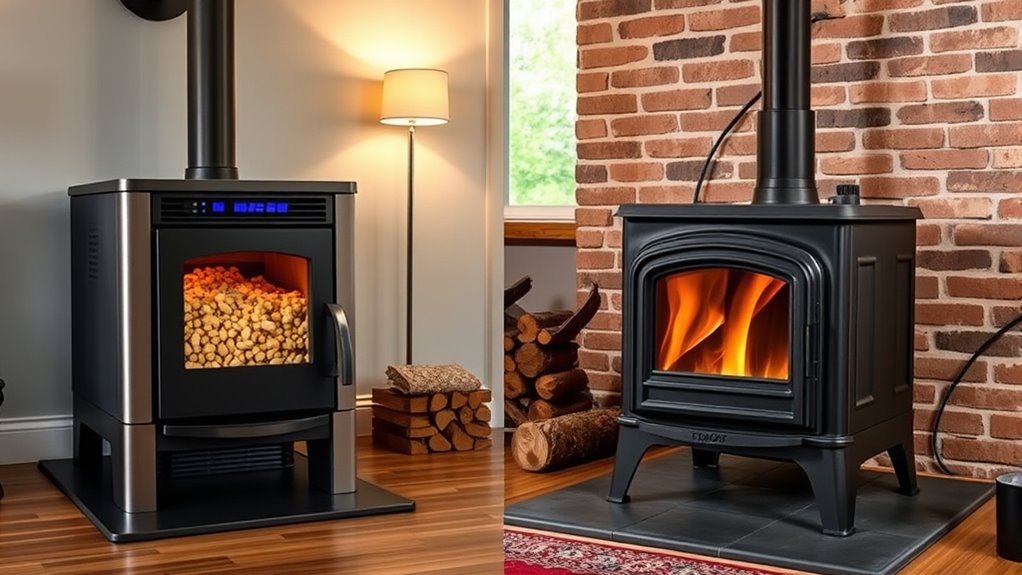
Pellet stoves ignite automatically with an electronic feed system, making startup quick and effortless. In contrast, wood stoves require manual fire lighting, which takes more time and effort. Daily operation is simpler with pellet stoves thanks to programmable controls, while wood stoves need regular, hands-on fire tending. Additionally, pellet stoves often feature filtration systems that help reduce dust and allergens generated during operation.
Ease of Ignition
Igniting a pellet stove is generally quicker and easier than lighting a wood stove because it features an automatic ignition system that starts the flames with just the push of a button. With an electronic igniter, the lighting process takes only a few minutes, eliminating manual lighting efforts. You simply press a button, and the ignition controls activate the ignition system, making ignition ease hassle-free. In contrast, a wood stove requires manual lighting with matches or lighters, and you need to arrange kindling and firewood carefully. During power outages, wood stoves can be manually ignited and operate independently of electricity, while pellet stoves rely on power to activate the electronic igniter. Overall, pellet stoves offer a more convenient, streamlined ignition process.
Daily Operation Ease
Pellet stoves are designed for simple, automated daily operation. You’ll appreciate the automatic operation, as the hopper feeds pellets into the combustion chamber with minimal manual loading. Precise temperature control is easy thanks to digital thermostats, allowing you to set and adjust temperatures without opening the stove or tending flames. Electronic components like igniters, fans, and control panels streamline the process, reducing the need for manual tending and constant monitoring. These features mean you can enjoy consistent heat with less effort, as the stove automatically manages combustion and airflow. Additionally, integrating sound therapy techniques can help create a more relaxing environment around your heating space. Ensuring proper maintenance and cleaning of your stove is essential for safe and efficient operation, which can be simplified with automated features. Modern pellet stoves often include automatic feed systems that further minimize manual intervention. Moreover, many modern pellet stoves incorporate advanced safety features to prevent accidents and system failures.
Environmental Impact and Emissions
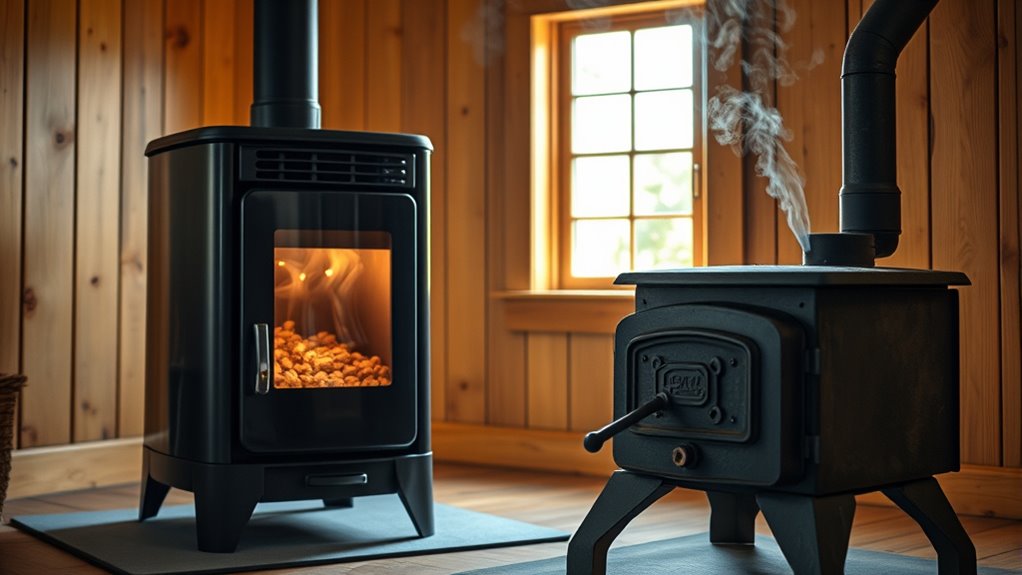
Pellet stoves generally produce fewer emissions and particulate matter than traditional wood stoves, thanks to advanced combustion technology. Using recycled wood byproducts makes pellets a more sustainable and carbon-neutral fuel source, helping lower greenhouse gases. Proper operation and maintenance are key to minimizing emissions from either stove type. Additionally, the use of locally sourced firewood can further reduce transportation emissions and support responsible forestry practices. Incorporating advanced combustion techniques can further improve efficiency and reduce pollutants emitted by both types of stoves. Moreover, utilizing sustainable forestry practices ensures that wood fuel remains an environmentally friendly resource over the long term. Emphasizing technological innovations in stove design can lead to even cleaner combustion and lower emissions in future models.
Emissions Levels Comparison
Compared to traditional wood stoves, modern pellet stoves produce markedly fewer emissions and particulate matter, making them a more environmentally friendly choice. Their advanced combustion technology re-burns smoke and pollutants, substantially reducing emissions levels. Pellet fuel, made from compressed wood byproducts, burns cleaner, resulting in lower greenhouse gases and air pollution. You’ll notice:
- Lower particulate matter and smoke output
- Reduced emissions levels compared to EPA-certified wood stoves
- Less contribution to air pollution
- Improved environmental friendliness through cleaner combustion
Additionally, pellet stoves often incorporate high-efficiency designs, further minimizing their environmental impact. As the industry evolves, technological advancements continue to enhance the environmental benefits of pellet stove technology. Integrating innovative combustion techniques can further improve emissions performance and sustainability, especially as sustainable fuel sources become more prevalent in the industry. Moreover, ongoing research into emission reduction methods promises to make pellet stoves even more eco-friendly in the future.
Fuel Sustainability Benefits
Because they utilize compressed wood byproducts, pellet stoves offer notable environmental advantages over traditional firewood burning. Pellet fuel is made from renewable, sustainably sourced byproducts like bark and sawdust, reducing waste and supporting long-term sustainability. Burning pellets produces markedly fewer emissions, including greenhouse gases and particulate matter, thanks to advanced emission controls in modern stoves. While firewood can be considered carbon-neutral when harvested responsibly, improper drying or harvesting increases emissions. Pellet stoves provide a more environmentally friendly option by ensuring cleaner combustion and lower emissions. Additionally, low-carb options in pellet fuels contribute to their eco-friendliness by minimizing the overall carbon footprint. Proper harvesting practices are essential to maintaining sustainability and reducing environmental impact. Using certified sustainable sources further enhances the eco-friendly benefits of pellet fuel. The use of renewable resources in pellet production underscores their role in sustainable energy solutions. Overall, their use of renewable, compressed wood byproducts helps minimize environmental impact, making pellet stoves a smarter, more sustainable choice for reducing your carbon footprint, especially when combined with sustainable harvesting practices.
Fuel Types, Storage, and Availability
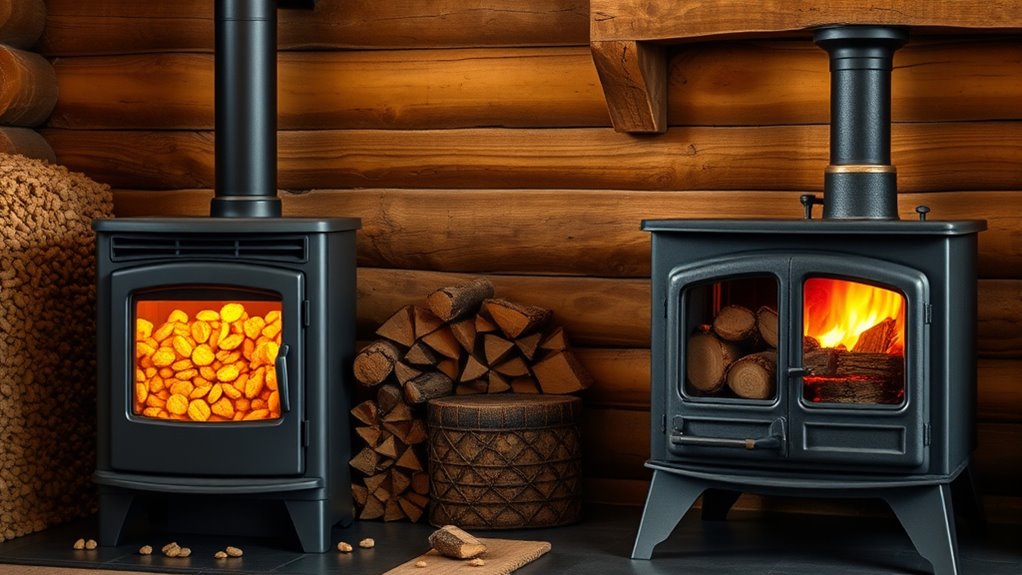
Have you ever wondered how the fuel types, storage methods, and availability differ between pellet stoves and wood stoves? Firewood requires outdoor storage in a dry, ventilated area, often needing seasoning and ample space for stacking. It’s a local, renewable fuel source, typically sourced from personal property or nearby suppliers. Wood pellets are stored dry in a storage bin, shed, or garage, making them easy to handle and compact. Their pellet supply is usually purchased at retailers, available in 40-pound bags or bulk, with longer shelf life if kept dry. Both fuel types are renewable, but firewood’s availability is higher in rural areas, whereas pellets suit urban settings. Proper storage and handling are essential to maximize efficiency and safety for both fuel types.
Installation Costs and Complexity
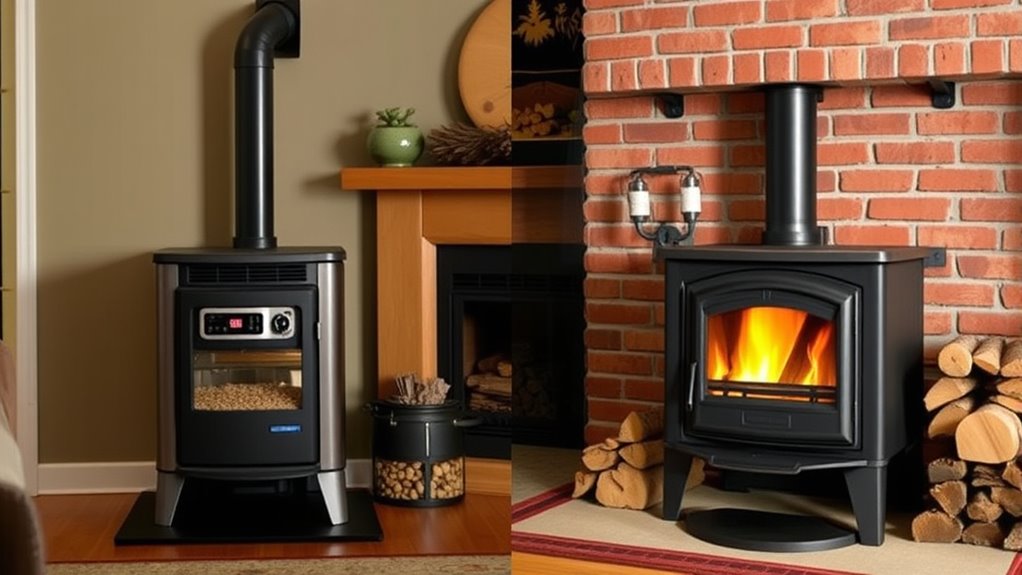
Installing a pellet stove is generally simpler and less costly than setting up a wood stove because it requires a smaller, less complex venting system. Pellet stoves often vent horizontally through a wall or with a small chimney, reducing setup time and expense. In contrast, wood stoves need a full, insulated chimney system extending above the roofline, increasing the complexity and cost. Professional installation involves more labor for wood stove setups due to the chimney and hearth requirements, raising overall expenses. The table below highlights key differences:
| Aspect | Pellet Stove | Wood Stove |
|---|---|---|
| Venting Systems | Small, simple, horizontal or direct | Large, complex chimney system |
| Installation Costs | Generally lower | Typically higher |
| Labor | Less | More |
| Setup Complexity | Easier | More involved |
| Venting Options | Flexible, minimal modifications | Extensive chimney setup |
Longevity and Lifespan

When considering long-term investment, the durability and lifespan of your stove play a significant role. Wood stoves typically last 20 to 25 years, with many models enduring for decades through proper maintenance and care. Their durability is proven, as some from the 1800s still operate today. Pellet stoves generally have a shorter lifespan of 15 to 20 years, mainly due to their reliance on electrical and mechanical components. The lifespan comparison highlights that wood stoves often offer greater stove longevity because of their simpler design. Regular cleaning, including chimney maintenance and gasket checks, helps extend lifespan. Their fewer moving parts contribute to enhanced structural integrity, making them more durable over time. Overall, wood stoves tend to have a longer lifespan with consistent upkeep.
Making the Right Choice for Your Home

Deciding between pellet and wood stoves depends on your specific home heating needs, lifestyle, and environmental priorities. Pellet stoves excel in efficiency (up to 83%) and offer automation for easier home heating, making them ideal if you prefer convenience and cleaner operation. Wood stoves provide a traditional ambiance with manual fueling, which may appeal if you enjoy a hands-on approach. Maintenance for pellet stoves is typically lower, and their venting is simpler and less costly. While installation costs are similar for both, pellet stoves often have lower venting expenses. Consider your environment’s sustainability goals, fuel availability, and your comfort preferences. Ultimately, choosing the right stove involves balancing efficiency, maintenance, and your desired level of automation to ensure your home stays warm and eco-friendly.
Frequently Asked Questions
Which Is Better, a Pellet Stove or a Wood Stove?
You’re wondering which stove fits best for your needs. If you want efficiency, cleaner emissions, and automated operation, a pellet stove is a great choice. However, if you prioritize reliability during power outages, a traditional wood stove might suit you better. Consider how much effort you’re willing to put into fueling and maintenance. Both options have their advantages, so choose based on your lifestyle, preferences, and environmental concerns.
What Is the Downside of the Pellet Stove?
The downside of a pellet stove is like having a high-maintenance pet; it demands attention and care. You rely on electricity, so power outages stop it cold unless you have backup power. Its complex components can break down, leading to repairs. Regular cleaning is a must, and if pellet supply is disrupted, your heat source becomes unreliable. Plus, initial costs can be steep compared to traditional wood stoves.
Why Are People Getting Rid of Pellet Stoves?
You might be getting rid of your pellet stove because it relies on electricity, leaving you without heat during power outages. Mechanical issues like motor and auger failures can lead to costly repairs, and ongoing maintenance becomes a hassle. Additionally, rising pellet prices and environmental concerns about manufacturing and transportation make alternative heating options more appealing, offering you more reliable, efficient, and eco-friendly solutions.
How Many Bags of Pellets Equal a Cord of Wood?
You might think a cord of wood is just a bundle of logs, but surprisingly, it’s about 2,000 to 3,000 pounds. To match that energy, you’ll need roughly 50 to 75 bags of pellets, each weighing 40 pounds. So, while wood seems straightforward, replacing it with pellets demands quite a few bags—an ironic reminder that convenience often comes with a hefty count.
Conclusion
Ultimately, whether you choose the cozy charm of a wood stove or the precise efficiency of a pellet stove, your decision shapes your home’s warmth and well-being. Consider your space, style, and sustainability goals as you weigh the wonders of wood’s rustic romance against pellet’s practical perfection. With careful consideration, you’ll craft a comforting, cost-effective, and mesmerizing heating haven—turning your house into a warm, welcoming wonderland of warmth and wellness.




